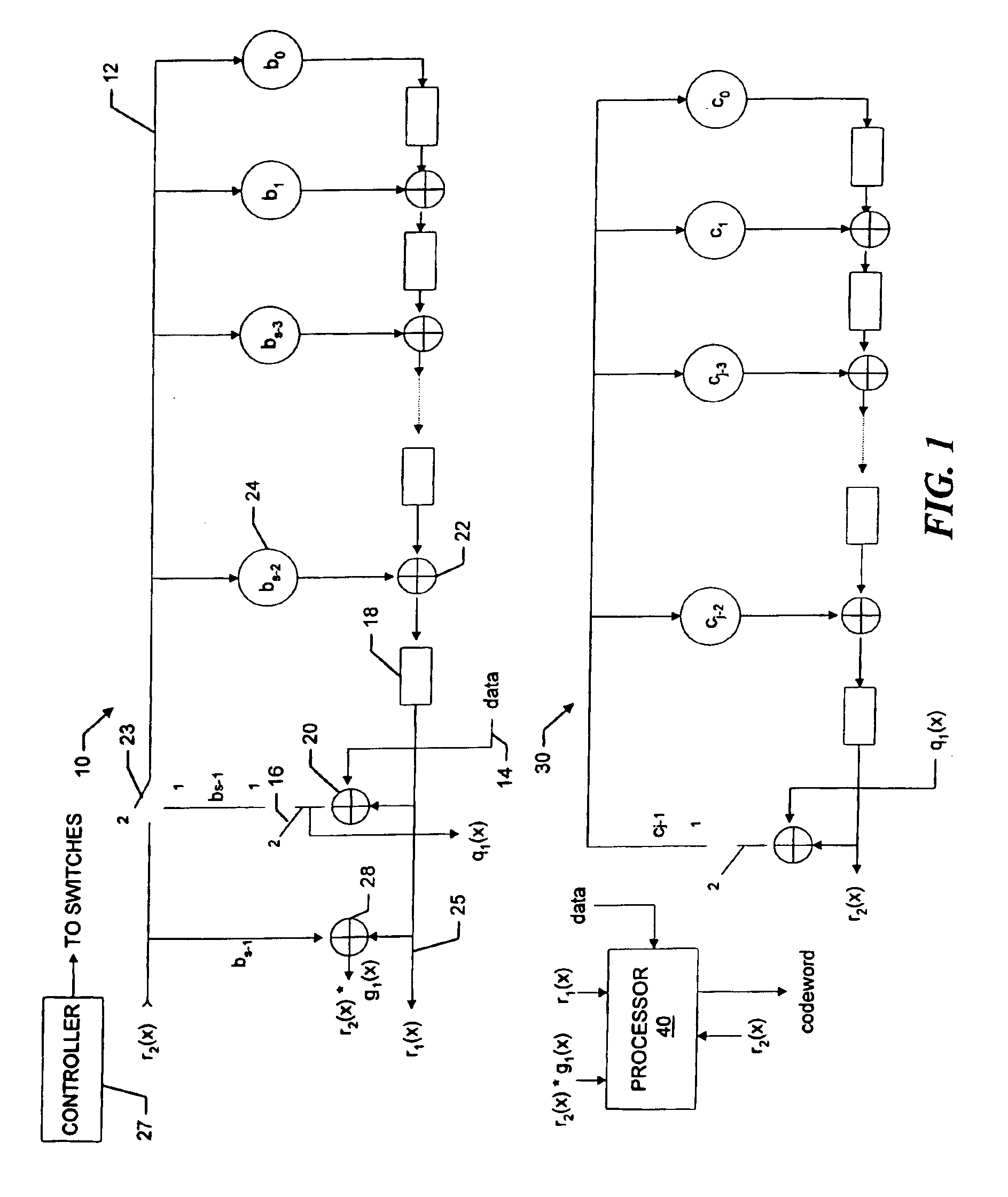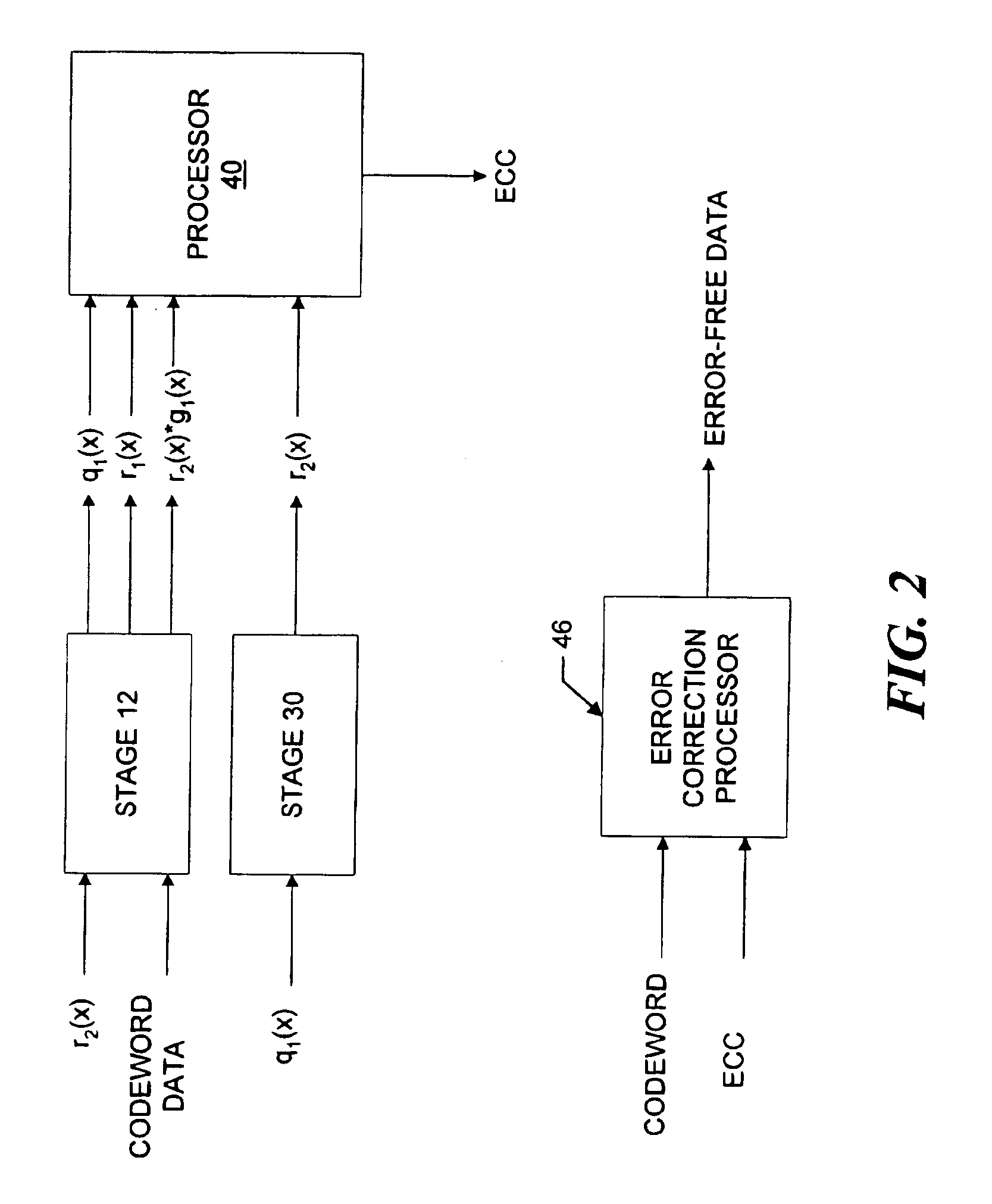Variable redundancy cyclic code encoders
a code encoder and variable redundancy technology, applied in the field of error correction systems, can solve problems such as errors, extra time associated with encoding and decoding data, and complexity of encoding and decoding systems
- Summary
- Abstract
- Description
- Claims
- Application Information
AI Technical Summary
Benefits of technology
Problems solved by technology
Method used
Image
Examples
Embodiment Construction
[0021]The discussion below is separated into sections, a first section discusses the mathematical theory, a second discusses one embodiment of the encoder and a third section discusses another embodiment of the encoder. All mathematical operations are is Galois Field operations.
[0022]A. The Theory
[0023]The k data symbols to be encoded may be represented as the coefficients of a degree k−1 polynomial d(x). The ECC is a cyclic code with a generator polynomial g(x) of degree n−k, and the data is encoded by dividing it by the generator polynomial. The result is a quotient q(x) of degree n−(n−k)−1=k−1 and a remainder r(x) of at most degree n−k−1. The coefficients of the remainder r(x) are included in the code word as the n−k ECC symbols. The code word data is thus:
d(x)*xn−k=q(x)*g(x)+r(x) eqn. 1
where xn−k represents a shifting of the data to the appropriate position in the code word.
[0024]For a generator polynomial with two factors:
g(x)=g1(x)*g2(x)
where g1(x) has degree s and g2(x) has ...
PUM
 Login to View More
Login to View More Abstract
Description
Claims
Application Information
 Login to View More
Login to View More - R&D
- Intellectual Property
- Life Sciences
- Materials
- Tech Scout
- Unparalleled Data Quality
- Higher Quality Content
- 60% Fewer Hallucinations
Browse by: Latest US Patents, China's latest patents, Technical Efficacy Thesaurus, Application Domain, Technology Topic, Popular Technical Reports.
© 2025 PatSnap. All rights reserved.Legal|Privacy policy|Modern Slavery Act Transparency Statement|Sitemap|About US| Contact US: help@patsnap.com



